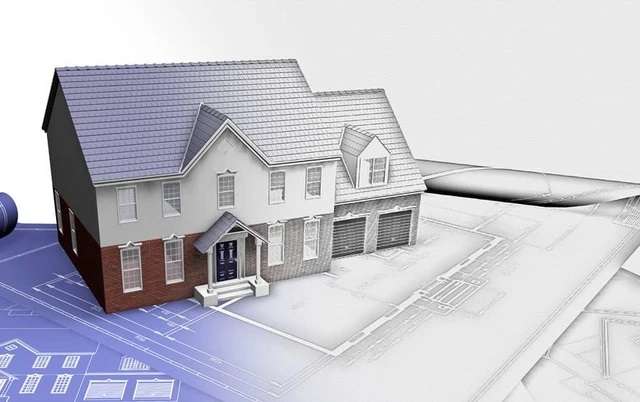In the dynamic landscape of the Architecture, Engineering, and Construction (AEC) industry, the integration of technology plays a pivotal role in shaping the future of design and construction processes. One such technological advancement that has gained significant traction is the transition from Computer-Aided Design (CAD) to Building Information Modeling (BIM). This shift signifies a paradigm change in how construction projects are conceptualized, planned, and executed, and at the core of this transformation lies the crucial process of CAD to BIM conversion.
The Evolution of CAD to BIM:
Understanding CAD:
CAD has long been the backbone of design and drafting in the AEC industry. It provides a platform for architects, engineers, and designers to create detailed two-dimensional (2D) representations of structures. However, the limitations of CAD become evident when it comes to handling the complexity of modern construction projects. CAD primarily deals with geometric shapes and lacks the intelligence to understand the relationships and interactions between various building elements.
The Rise of BIM:
Building Information Modeling, on the other hand, is a comprehensive approach that goes beyond the limitations of CAD. BIM is a digital representation of the physical and functional characteristics of a building or infrastructure. It encompasses not only the geometry of the building but also the data associated with each element, such as materials, dimensions, and spatial relationships. This information-rich model serves as a shared knowledge resource for information about a facility, forming the basis for decision-making throughout its lifecycle.
Empowering AEC with CAD to BIM Services:
1. Enhanced Collaboration:
CAD to BIM conversion facilitates enhanced collaboration among project stakeholders. BIM models serve as a centralized repository of information accessible to architects, engineers, contractors, and other collaborators.
The collaborative nature of BIM promotes real-time communication, reducing the likelihood of errors and discrepancies during the design and construction phases.
2. Parametric Modeling:
BIM introduces the concept of parametric modeling, allowing elements within the model to be interconnected and influenced by changes. This parametric intelligence enables quick and efficient design modifications, saving time and resources.
Unlike CAD, where changes may require manual adjustments, BIM ensures that modifications are propagated throughout the model, maintaining consistency and accuracy.
3. Data-Driven Decision Making:
CAD to BIM conversion enriches the model with data attributes, turning it into a valuable tool for data-driven decision-making.
Stakeholders can extract meaningful insights from the model, ranging from cost estimations and material quantities to energy performance and construction sequencing.
4. 4D and 5D Capabilities:
BIM extends beyond the spatial and design aspects by incorporating time (4D) and cost (5D) dimensions. This allows project teams to visualize the construction sequence over time and estimate costs more accurately.
CAD to BIM services enable the integration of scheduling and cost data, providing a holistic view of the project’s lifecycle.
5. Clash Detection and Coordination:
BIM models support clash detection, a crucial aspect in identifying potential conflicts among different building elements.
CAD to BIM conversion enhances clash detection capabilities, ensuring that clashes are identified and resolved during the design phase, preventing costly rework during construction.
6. Facilitating Facility Management:
BIM models serve as valuable assets for facility management post-construction. The enriched data in the model aids in the efficient maintenance and operation of the facility.
CAD to BIM services ensure that as-built information is accurately captured and incorporated into the BIM model, providing a reliable reference for facility managers.
Conclusion:
In conclusion, the adoption of CAD to BIM services represents a strategic move for AEC professionals looking to stay at the forefront of industry advancements. The transition from CAD to BIM empowers the industry with enhanced collaboration, parametric modeling, data-driven decision-making, 4D and 5D capabilities, clash detection, and efficient facility management. As technology continues to evolve, embracing BIM becomes not just a choice but a necessity for those aiming to deliver high-quality, efficient, and sustainable construction projects in the modern era.

As the editor of the blog, She curate insightful content that sparks curiosity and fosters learning. With a passion for storytelling and a keen eye for detail, she strive to bring diverse perspectives and engaging narratives to readers, ensuring every piece informs, inspires, and enriches.










